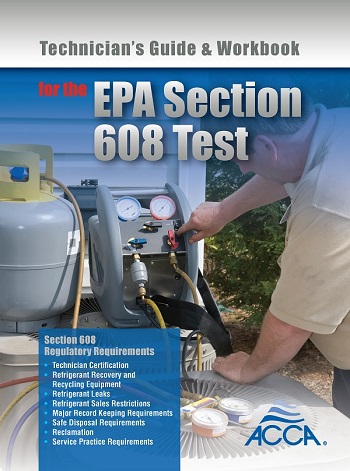In every industry, companies are looking for ways to save on energy costs. This article provides a quick guide that examines several low-cost ways you can find energy savings for any facility. Most are easy to implement but you may be surprised with the results. Among the savings areas, we’ll take a look at heating, lighting, electric motors, power factor correction, and more.
Heating
Heating industrial facilities can be difficult and expensive. For instance, many buildings have high roofs with no internal ceilings to reduce the volume of air to be heated. Some good questions to ask are: Can the building accommodate a lower internal ceiling? Can you insulate the walls and/or roof or increase the existing insulation? Can offices be partitioned off from the main production areas? Can you use fans to circulate the hot air near the roof? Can less of the factory be used during cold periods so you have to heat less? Are you heating areas that don’t see much use, like stockrooms and stores? Can you group these areas together to heat them more cost-effectively? Consider using time switches or better still, install a thermostatic control.
Lighting
Many industries work during the day, so the business may have an opportunity to use all that available sunlight. Whenever and wherever possible use that natural light. This is an easy area to assess actual needs, and in fact you might find that the facility is using too much light. If so, remove some bulbs or tubes. Note however that there are legal limits regarding the amount of luminance required in various work settings.
Also consider an upgrade to higher-efficiency units. For example, there are many LED options on the market offering much lower operating costs. Ensure that you have as few incandescent (tungsten filament) lamps in the building as possible and be sure to upgrade any spotlights to low-energy types.
As an example in an industrial setting, let’s take a business operating in a building with a metal roof. About 15 percent of the roof has roof lights to let in natural light, but these roof lights are only glass fiber and have degraded over time to the point of being dark. By simply replacing them with new ones and increasing the number to cover about 30 percent of the roof space, the owners can cut the amount of electrical light they need by half.
Electric Motors
Many industrial processes depend on motors — in fact many businesses spend 80 percent to 90 percent of their total electricity running them. Some tips to reduce motor energy costs:
• Use high-efficiency motors. They are between 5 percent and 20 percent more expensive but you’ll get your money back quickly.
• If you are specifying a motor, don’t oversize it — get the right-sized motor for the job.
• Use variable speed drives (VSD), which will vary motor speed according to the load. Rewinding a motor can reduce efficiency by 1 percent to 2 percent. Only run the motor when needed.
• Provide periodic maintenance of the motor and drive train, especially the bearings. Ensure that you get good quality replacement parts from a good source.
• Power factor (PF) has a big impact on motor efficiency: for example a 0.7 PF will cause the motor to lose 30 percent of output power.
Power Factor Correction
Power factor is a technical term given as a number between 0.00 and 1.00 (unity) and can be either leading or lagging. You want your power factor to be as close to unity as possible. There are many companies offering PF monitoring and correction, so get PF checked and corrected if needed.
Look at the Bills (Electricity, Gas, Heating, Diesel...and don’t forget Water)
The easiest way to assess usage is to examine all the energy bills from all energy providers — this will provide a feel for energy spending compared to the other aspects of the business. We’ll take a look at benchmarking later. It’s easy to use a spreadsheet to create a pie chart of what the company spends on all major purchases. See how big a slice energy is; it might be a nasty surprise. This can also help in estimating the amount of time you should invest in the energy audit process.
Read the Utility Meters
The business may only get billed monthly or quarterly, so read the meter every week (or even every day) to get a better breakdown of when energy is being used. If the site has more than one meter, the job can be time-consuming, but this way you can find out which circuits are taking the energy. If there is more than one meter, you may also want to look at an electrical line diagram with an electrician to show you the connectivity of the various meters and circuits as well as the various loads on site.
Use a Data Logger to Monitor Usage
Going over the bills and metering will give you an overview of energy usage, but usually won’t tell you where that energy went. Using the published rating for equipment may be misleading if any of it is out of spec or is actually running more frequently or longer than expected. To get the full picture you’ll need to collect (record) some data. A data logger can identify opportunities to save energy and capture an energy profile. Armed with the data, you can then calculate acceptable reduction and savings areas. These devices are a cost effective way to achieve long-term energy savings.
For example a current data logger (monitoring current) is accurate enough to give you the data you need to show the rough energy usage over a week or so — this will let you compare theoretical estimates to actual results.
A voltage ‘duty cycle’ data logger will analyze a pump- or fan-run duty cycle, which in turn will tell you when the oil or gas heating system was actually on. Although the fan or pump energy usage may be fairly insignificant, the overall heating energy use (whether oil or gas) may be much more. For instance, does it run when the building is empty? Is the frost protection set to 59°F rather than 41°? And so on. These can be major savings areas. Voltage management can also identify if optimization, reduction, or stabilization can offer you the greatest savings.
Benchmarking - kWh/widget, kWh/m2, kWh/employee
An easy way to compare a business to others is by using simple ratio figures, i.e., benchmarks. For example, kWh per widget produced is the number of kWh per annum divided by the number of widgets the company or division produced that year.
Another typical benchmark is kWh per employee: again take the total number of kWh used over the year, this time divided by the number of employees onsite or involved in the process.
Be careful, the kWh/employee figure can be deceptive — it assumes that all employees are efficient. For example, using only this benchmark, can we find out which of the following two companies is more efficient?
• Company A uses 10,000 kWh per annum, has only three employees and produces 500 widgets, so it has a metric of 3,333 kWh/Employee.
• Company B uses 15,000 kWh per annum, has four employees, and produces 1500 widgets, giving it a higher metric of 3,750 kWh/Employee. Compared against Company A it uses 50 percent more energy, 33 percent more staff, and produces 300 percent more widgets.
To find out which company is more efficient, it’s better to benchmark using kWh per widget instead:
Producer A uses 10,000 kWh per annum, produces 500 widgets, and therefore has a metric of 20 kWh/widget. Producer B uses 15,000 kWh per annum, produces 1500 widgets, and therefore has a metric of 10 kWh/widget. From this perspective, Producer B is actually more efficient.
For cases where it’s difficult to compare usage with other parties, you can always compare year-to-year for the company and also look at employee-widget ratios.
Compare Bills with Neighbors, Partners, and Competitors
Although it would be ideal to compare the business to the competition, in practice it’s not always possible. However, it would be informative to compare it with partners and similar non-competitive industries. Sometimes this can be as simple as asking neighboring industries. The companies may be open to discuss actual energy figures for mutual benefit — if not, just use the figures above.
Assess Energy Needs
Your comparison and benchmarking processes may have shown a big difference between the company’s usage and that of the industry, a neighbor, partner, or a competitor. Use state registries to see accounts of other companies. A full profit and loss account may help further detail energy costs.
Energy audits are a great way to assess a facility and realize savings. For example, CAS DataLoggers offers the EC-7VAR three phase voltage and current logger which enables users to perform energy audits by viewing onsite power consumption given in kilowatt hours as a result of logging. Recording at high speed on a large memory, the logger comes in a kit with voltage leads, transducers, a USB lead, and software — everything needed to get started with a power metering project and view power consumption, locate issues with supply and equipment, and find energy savings opportunities. The software allows users to define the voltage to plot power and energy, then simply upload recorded data via USB to a PC for analysis.
Set Reduction Targets
A good starting point is to set a 5 percent or 10 percent reduction target you can achieve in six to 12 months. Energy reduction makes the business more competitive and provides an edge since any money saved can go toward product development, process improvement, or marketing. Make sure to periodically monitor progress toward the target.
Using the above methods and supplementing your information with readings from a data logger, you can identify savings areas in any facility. By logging current/voltage, power/energy, and more, the full picture of a facility’s energy usage will come into view. With an accurate device you can manage what you can monitor and start on the path to energy efficiency today.
Courtesy of CAS DataLoggers Inc., Chesterland, Ohio. For more information, visit www.dataloggerinc.com.
Publication date: 8/4/2014









